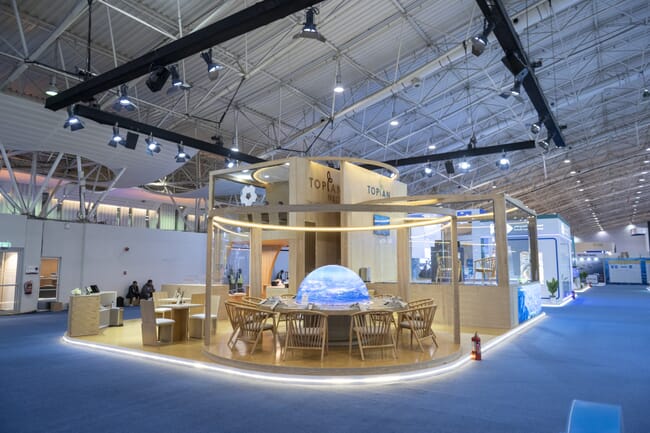
© SIMEC
Speaking from the SIMEC trade show, Dr Juan-Carlos Motamayor, CEO of Topian – the Saudi company in charge of the Neom region’s aquaculture development – outlined their ambitions to produce 80,000 tonnes of seafood, three quarters of which will be grown in land-based RAS facilities, while a quarter will be grown in a range of different marine enclosures.
“For marine-based aquaculture we are currently doing open sea pens and submersible sea pens and we are also in the process of developing contacts for various types of enclosed sea pens. We need to evaluate which are the most cost-efficient and have the least impact on the marine ecosystem,” explained Dr Motamayor.
Topian is currently looking to partner with existing aquaculture operators, both to produce fish and to undertake pilot studies. Their first official agreement, which was announced at the recent SIMEC exhibition, is a joint venture with Tabuk Fisheries – a company that is already producing around 2,000 tonnes of marine finfish in the Neom region.
Other plans, according to Dr Motamayor, include the development of a hatchery capable of producing 42 million fingerlings a year – which would make it the largest hatchery in the MENA region.
In terms of the land-based farming, salmon will be one of the key target species, due to the strong consumer demand for it in the region.
“We announced an MoU with Pure Salmon this week and we expect to move from an MoU to a potential partnership for the localised production of salmon in the kingdom,” noted Dr Motamayor.
However, he added that they aim to mainly produce local species – including sea bream, sobaity, kingfish, amberjack, meagre and hamour – building on the pioneering work of companies such as Tabuk.
“We believe that these locally well-known species will bring acceptance from local consumers, and at the same time bring diversity to the market by bringing different taste profiles. And by localising significant volumes of all these fish we expect to have more fresh fish with better taste, better nutrition and better quality,” Dr Motamayor reflected.
However, as he observed, it will also be essential for Topian to work with genetics companies in order to improve the efficiency of farming these species, as many are comparatively new to aquaculture. As a result, he says that they are currently in discussion with an American genetics company about a genomic selection-based breeding programme that’s tailored to the local species and the local conditions.
“Given our ambition to focus on native species, we need significantly improve the feed conversion ratios, to work on the [breeding] cycles and potentially improve disease tolerance,” Dr Motamayor pointed out.
Equally, he added, it will be vital to work with companies to develop and optimise feeds for these comparatively novel species.
“We’re currently sourcing feed from Irasco and in the future we’ll hope that the new formulations adapated to each species will be produced at large scales,” Dr Motamayor explained.
Topian are currently inviting expressions of interest from other players in the aquaculture sector.
“We look forward to developing additional partnerships to help us reach our goal of producing 80,000 tonnes of seafood within 15 years,” he concluded.




